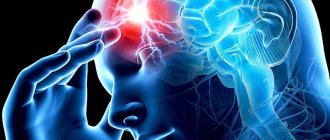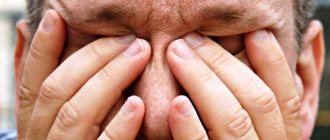Hemiplegia is a condition in which a person cannot move one or another part of the body. Experts say that the culprit is a disruption in the transmission of nerve impulses along the fiber. This occurs due to a number of reasons: trauma, infection, neoplasms, etc. Treatment is primarily aimed at eliminating the causes that caused this disorder, so the therapy will be different. However, the sooner a person seeks help, the sooner a diagnosis is made and treatment begins, the greater the chance of getting rid of the unpleasant condition.
What is hemiplegia
Hemiplegia is a violation of the transmission of nerve impulses to the muscle fibers of any part of the body. In other words, the impulse coming from the cerebral cortex does not fully reach the motor neurons, which are located in the anterior horns of the spinal cord. It is for this reason that a person loses control over movements in the limbs or parts of the body. This condition is reversible. With proper treatment, recovery occurs very quickly.
If hemiplegia is temporary and undergoes treatment, then hemiparesis is a more serious condition. And it consists in severe damage to nerve fibers. Motor neurons are either completely destroyed under the influence of any irritants, or for some reason a physiological blockade occurs. In this case, treatment will no longer help. If the transmission of nerve impulses is disrupted, motor activity stops, and the muscles in this area atrophy. With hemiparesis, there is a right-sided or left-sided lesion.
In the case of hemiplegia, complete restoration of motor activity is possible, in contrast to hemiparesis. In the place where the medulla oblongata passes into the spinal cord, partial crossing of motor nerve fibers occurs, and various types of disorders occur here, but the symptoms of the lesion appear on the opposite side of the body. Such nuances are usually covered by a specialist.
Manifestations of hemiplegia
In any case, the main manifestation of hemiplegia is the complete loss of voluntary movements on one side of the body. This is what distinguishes hemiplegia from hemiparesis - with it, movements may be difficult or weakened, but the very ability to perform them remains. In addition, along with disturbances of voluntary movements and muscle spasms, other symptoms are present - an increase in healthy reflexes and the appearance of pathological ones, for example. You can often notice a change in the color and temperature of the skin on the paralyzed side, as well as swelling. Sometimes with hemiplegia there are also accompanying symptoms, such as epilepsy. All this data together helps doctors establish the most accurate diagnosis and select the optimal treatment regimen for hemiplegia.
Causes of hemiplegia
Hemiplegia is not an independent disease. Impaired motor activity occurs when the structures of the central nervous system are damaged. Therefore, in order to restore the ability to move limbs or part of the body, you need to find the disease that caused this disorder.
But the following factors lead to the appearance of symptoms of hemiparesis:
- Strokes (cerebral or spinal). This condition is characterized by impaired blood circulation in the vessels of the brain: rupture or blockage of the lumen (thrombus, embolus), resulting in the death of nerve cells. Depending on the location of the pathological focus, symptoms of nerve patency failure will be observed. Stroke accounts for about 2/3 of cases of hemiplegia.
- Traumatic brain injuries. This may be the result of accidents or bruises. Depending on the severity, there may be partial disruption of nerve conduction or complete paralysis.
- Autoimmune processes. The sheath of the nerve fiber is destroyed. This condition is observed in Alzheimer's disease. The root cause of this condition is not fully understood, but experts believe that the patient’s genetic predisposition is to blame.
- Infectious diseases in which the pathogen penetrates the brain tissue. The pathogen comes either from the outside or from pathogenic foci in the internal organs. This condition is called neuroinfections, which include meningitis, tuberculosis, encephalitis, and neurosyphilis.
- Neoplasms. Single or multiple tumors compress brain tissue, which provokes disturbances in motor activity.
There are also other causes of hemiplegia. These can be helminthic infestations, congenital defects of the nervous system, and various intoxications. People with a hysterical personality type may also suffer from this condition.
Methods for treating hemiplegia
Treatment of hemiplegia always relies on three pillars: drug therapy, surgical treatment and rehabilitation. Each of them complements the other two and they all work together for a common result, so they should be approached with equal attention.
Medicines help reduce the level of spasm, which makes life and care for patients easier, and most importantly, gives scope for rehabilitation. In addition, there are attempts to use nootropic drugs to treat the cause of hemiplegia - brain damage, but it is important to note that these are methods without proven effectiveness.
Surgical interventions also serve the purpose of reducing the level of spasticity and provide more opportunities for subsequent rehabilitation - staged fibrotomy according to the V.B. method. Ulzibata, for example, will free chronically spasming muscles from contractures, which in such a situation inevitably arise and in themselves further limit movement. Without this, further rehabilitation for hemiplegia would be much less effective and probably much more painful. The latter in itself reduces the effectiveness of rehabilitation procedures.
After this, rehabilitation comes into play - there are many ways and techniques, and many of them can really make the lives of patients with hemiplegia much easier. These include physiotherapy, for example electrical muscle stimulation, which helps reduce spasticity, and various massage techniques, and physical therapy, including the use of special equipment.
One of the most important rehabilitation methods is to involve the patient in normal daily activities - this helps not only to reduce the symptoms of hemiplegia, but also teaches new skills and helps socialization.
Among the relatively new rehabilitation techniques is “mirror therapy,” which actually uses mirrors to help the patient concentrate on one side of the body. According to studies from 2018-2019, mirror therapy shows significantly better results than conventional rehabilitation, although the specific mechanisms of its action are not yet fully understood.
There is one more aspect that is not directly related to the treatment of hemiplegia, but is very important for maximizing the results of therapy. This is Wednesday. A barrier-free environment is important for both children and adult patients with hemiplegia, and inclusive education helps children socialize better and quickly learn new skills.
Classification of hemiplegia
International neurological practice, in order to facilitate the diagnosis of hemiplegia, has developed a classification of this disorder. Due to their occurrence, the diseases described above are:
- Organic. Occurs when the brain is damaged.
- Functional. They are psychogenic in nature and can go away on their own, even without treatment.
According to the location of the pathological focus:
- Left-handed.
- Right-handed.
- Contralateral. In this case, the focus is on the side opposite to the lesion.
- Homolateral. The lesion is located on the same side as the lesion.
Hemiplegia can be dual in nature, when both sides of the body are involved in the pathological process. This condition occurs much less frequently. The disease can also have a cross-sectional nature, when opposite limbs are affected. Hemiparesis can also be cerebral or spinal spastic.
The pathological process is divided according to the stages of its course:
- Progressive spastic hemiplegia.
- Regressive, when nerve conduction begins to gradually recover.
Hemiplegia can occur in both adults and children. In the latter case, it is more difficult to find the cause of the disease, which affects diagnosis and treatment. However, with a timely diagnosis and timely initiation of treatment for left- or right-sided hemiparesis, the child has a chance of full recovery.
Prognosis for hemiplegia
With functional hemiplegia, the prognosis is as favorable as possible - such conditions usually disappear completely and without a trace.
With organic hemiplegia, everything is somewhat more complicated. On the one hand, given that hemiplegia does not progress on its own unless caused by a tumor, worsening of symptoms over the course of life cannot be expected. On the other hand, it is important to remember that both cerebral hemiplegia and central hemiplegia lead to a decrease in muscle activity on one side of the body, and because of this, additional symptoms may develop - deterioration in joint mobility, the appearance of bedsores, or the formation of blood clots.
Unfortunately, at the current stage of development of medicine, one cannot expect a complete and complete disappearance of the symptoms of organic hemiplegia. But, despite this, with timely and comprehensive treatment in patients with hemiplegia in general and specifically in cases of cerebral palsy in the form of spastic hemiplegia, very noticeable improvements are possible, both in terms of symptoms and in terms of quality of life and socialization.
We hope that now for you the expressions “Central non-spastic right-sided hemiplegia” or “Cerebral spastic left-sided hemiplegia” will not sound like a Chinese letter or a sentence!
Return to list
Symptoms of hemiplegia
Hemiplegia is characterized by a violation of the conduction of nerve impulses from the brain to muscle fibers due to damage to the nerve fibers of the pyramidal tract. Based on this, the main and main clinical sign of this condition will be the absence of motor activity of any part of the body, depending on the location of the pathological focus: on the opposite side, cross or the same.
Forms of the disease:
- Tetraplegia. 4 limbs are involved in the pathological process.
- Monoplegia. Motor activity is impaired in 1 limb.
- Diplegia. Symmetrical parts of the body are affected.
- Hemiplegia. Impaired motor activity of any one part of the body, for example, the right arm, part of the torso, leg.
Associated symptoms of the disease are:
- Hypertonicity of the muscle tissue of the affected part of the body.
- Pathological reflexes of the limbs.
- Strengthening reflexes: tendon and periosteal.
- Decreased joint reflexes.
A person who suffers from a nerve patency disorder may experience: disturbances in speech and facial expressions on the affected side.
What else can be observed in the patient in the affected area:
- Cyanosis of the limb.
- Decreased skin temperature.
- Cramps or involuntary movements.
- Painful sensations.
- Decreased or loss of sensitivity.
- Violation of intellectual activity.
Depending on the severity of the process, symptoms may be barely noticeable or well pronounced.
Kinds
According to the etiological factor, hemiplegia occurs:
- organic;
- functional.
According to the type of motor neuron affected:
- central (spastic);
- peripheral (sluggish).
According to the location of the muscles involved:
- right-sided;
- left-handed.
Depending on the location relative to the lesion:
- contralateral (with central damage, on the opposite side);
- homolateral (with peripheral lesions, on the side of the lesion);
- double.
Variants of lesions in hemiplegia
By level of damage:
- cortical (with damage to the motor area of the cerebral cortex);
- supracapsular (the focus is located closer to the internal capsule);
- cortical-subcortical;
- pyramidal-thalamic (in the area of the visual thalamus);
- capsular;
- alternating (cranial nerves suffer on the affected side, and hemiplegia develops on the opposite);
- alternating optic-pyramidal (one-sided blindness on the affected side and hemiplegia on the opposite side);
- cross (at the intersection of the fibers of the tract);
- spinal (no damage to the cranial nerves).
Depending on the stage of the pathological process:
- diaschisal (occurs in the acute period of coma due to shock changes in the centers of the brain);
- progressive (with a long, increasing course of the underlying disease);
- regressing (with clinical improvement).
The anatomical substrate for the development of hemiplegia is a lesion at various levels of the pyramidal tract, through which the transmission of nerve impulses occurs in the superior-inferior direction.
Diagnosis of hemiplegia
It is enough for a neurologist to carefully examine the patient to make a diagnosis. However, in order to carry out a differential diagnosis and find out the cause of the disorder, it is necessary to conduct a number of different studies:
- Endocrinological examination: hormonal levels, work of the endocrine glands, especially the thyroid and adrenal glands.
- Biochemical and general blood test - shows the general state of health and changes in basic vital signs.
- Oncological research. It is carried out to identify neoplasms.
- CT and MRI. Helps identify strokes, oncology, etc.
- Lumbar puncture. The cerebrospinal fluid is diagnosed for neuroinfections.
- Electromyography. It is carried out to diagnose diseases of the nerves and muscles.
After collecting all the information from the patient’s life, examining, and conducting all the necessary studies, the neurologist will make the correct diagnosis, find the cause of the pathology and begin therapy.
Diagnostics
The main way to diagnose hemiplegia is to carry out characteristic neurological tests (Barre, Mingazzini, Garkin, Goffman, etc.), which make it possible to identify the nature of hemiplegia and carry out differential diagnosis with neurological diseases with similar symptoms.
Electromyography is the main type of instrumental diagnosis of hemiplegia
Of the instrumental methods, electromyography is used to record the bioelectrical activity of muscles.
Close in meaning to the term “plegia” is the term “paresis”, which also denotes a violation of movement, but not complete, but partial.
To reliably identify the source of damage to the pyramidal tract, computed tomography or magnetic resonance imaging is performed.
Treatment
Hemiplegia is a secondary disease. So, in order to get rid of this disorder, it is necessary to eliminate the cause of the disease. Therefore, the emphasis in treatment is on this. For example, for strokes, neuroprotectors, B vitamins, and vasoactive agents are prescribed. In case of brain tumors, surgical operations or appropriate treatment are performed if necessary.
What groups of drugs are prescribed to correct the disease:
- Cholinesterase inhibitors.
- Vitamins.
- Painkillers.
- Muscle relaxants.
- Antioxidants.
- Drugs that improve metabolic processes in nervous tissue.
The positive effect also has a direct effect on the muscles. This can be either a massage or other physical procedures, for example, magnetic, basic and electrotherapy, or the use of special lasers. The patient can also use special devices that will help him take an upright position. This will make the patient's life easier.
Traditional medicine methods can supplement basic therapy: various ointments, lotions, decoctions of medicinal plants, as well as manual therapy, acupuncture and other alternative medicine. However, we must not forget that the main treatment must be carried out first.
Psychological therapy and social adaptation will provide the patient with considerable help. Help with finding a job, registration of disability, if necessary, as well as social and domestic support are relevant here.
What causes the violation
Factors that can lead to hemiplegia are quite diverse:
- cerebral and spinal strokes , in which the blood supply to the area of the brain with the motor tract passing through it is stopped;
- brain and spinal cord injuries;
- infectious lesions of the central nervous system;
- extensive diffuse foci of ischemia of a discirculatory nature;
- brain tumors;
- functional disorders , in particular hysterical neurosis, in this case the pyramidal tract is preserved, and hemiplegia (hemiparesis) is a manifestation of pathological psycho-emotional reactions of a person.
Most of all manifestations of hemiplegia are acquired as a result of certain organic damage to the brain and spinal cord.
However, there are also congenital variants in which the baby is already born with a disorder. This is a consequence of improper formation of central motor neurons during embryogenesis or other disorders of cerebral and spinal functions during fetal development.
As a rule, this is not one, but several reasons at once, manifested by hemiplegia or delayed formation of cerebral structures.
Most often, the basis of pathogenesis is dyscirculatory disorders of the intracerebral, utero- and fetoplacental circulation, leading to dysgenesis and malformations of the newborn’s brain.
Consequences and complications
Restoring motor activity of a limb or part of the body depends on the degree of damage to the nerve structures, as well as on the root cause of the disease and treatment methods. With a timely diagnosis and treatment initiated, provided that the pathology is temporary, motor activity returns in full. But for a complete recovery, long-term rehabilitation will be required, visits to special centers and courses, where specialists will select methods of influencing the nervous system that are suitable for the patient.
In some cases, the disease is irreversible and the return of physical activity is impossible. In this case, hemiplegia turns into hemiparesis, and the patient becomes disabled.
Hemiplegia is a disease that needs to be fought. In addition, new methods of exposure and treatment methods for brain diseases are now being developed. New drugs are being developed that are more effective. With the correct diagnosis of the main diagnosis, as well as with competent therapy, the motor activity of the affected part of the body or limb can be returned to its previous state and one can continue to live at the usual pace of life.
Pathogenesis of the disorder
The pyramidal tract itself originates from layer V of the cerebral cortex and is most clearly represented in the area of the precentral gyri.
The central neuron of the tract descends along the cerebral structures to the level of the medulla oblongata, where it makes the transition to the opposite side, then following in the lateral columns of the spinal cord to its anterior horns and meets the peripheral motor neuron.
For most muscles, the crossing of the corticospinal tract is incomplete, that is, part of the tract goes to the peripheral motor neurons of its side. This mechanism is a kind of protection of the muscles from the consequences of unilateral damage to the pyramidal tract.
In this case, the function of the damaged pyramidal tract on one side will be taken over by the opposite corticospinal tract.
However, there are muscles that are particularly vulnerable in this regard. For them, the pyramidal path makes a complete crossover. These are the muscles of the lower part of the facial muscles, the muscles of the tongue and the muscles of the upper and lower extremities.
Therefore, with unilateral pathology of cerebral structures, it is these muscles that suffer. With unilateral damage to the central neuron of the corticospinal tract before the decussation, the symptom of hemiplegia is formed on the opposite side, after the decussion - on the affected side.
Topical diagnostics
Topical diagnosis is based on the presence of a complete decussion of the pyramidal tract at the level of the medulla oblongata for the muscles of the upper and lower extremities.
- In case of central right-sided hemiplegia, the lesion should be looked for in the left hemisphere of the brain, in the left sections of the cerebral trunk, or in the right lateral column of the spinal cord above the cervical enlargement (it is in these sections that the first neuron of the pyramidal tract passes).
- The same can be said about left-sided hemiplegia, in the presence of which pathology should be assumed in the right parts of the brain or in the left lateral column of the spinal cord to the level of the segments providing innervation to the upper limb.
- If the pathological process affected half the diameter of the spinal cord at the level of the cervical enlargement (segments C5-Th1), hemiplegia will be represented by a spastic lesion for the lower limb and flaccid plegia for the upper (due to damage to peripheral alpha motor neurons).
- If the lesion is localized in the spinal cord , below the cervical thickening , the disorder will not be observed, since the arms will be intact.










